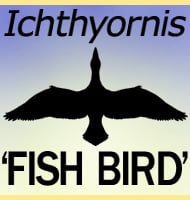Yanornis
In Depth Along with Microraptor, the discovery of Yanornis was born out of the Archaeoraptor scandal. Named after the Yan Dynasty, Yanornis features several features that are common to modern birds including the absence of the prefrontal bone, a bone that separates the lacrimal bone in front of the eye from the frontal bone that … Read more


